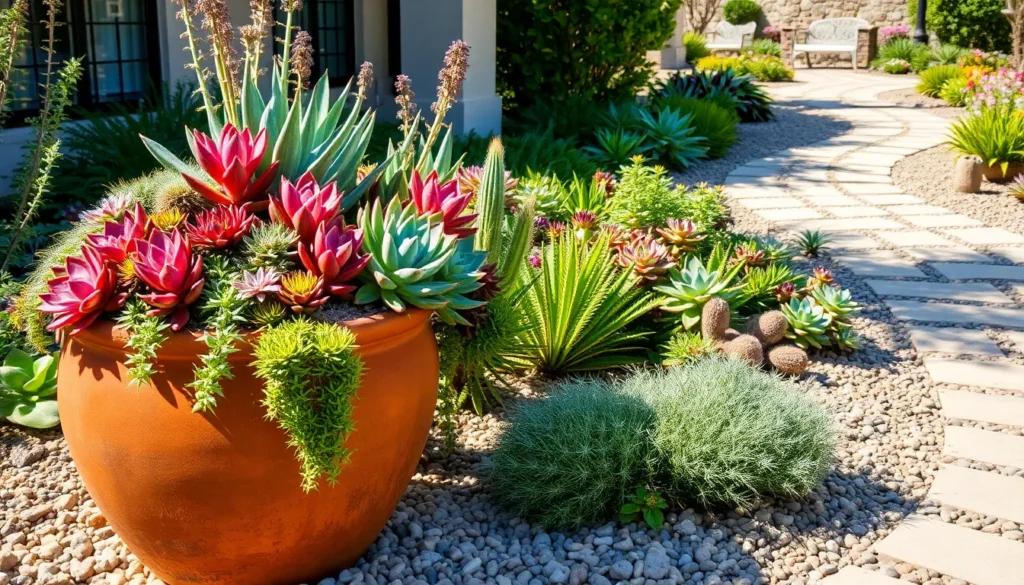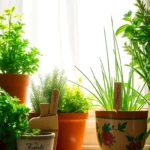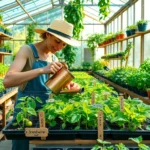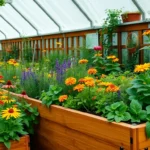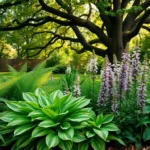Welcome to the lush world of gardening where your green thumb can thrive, no matter your level of experience! Whether you’re just starting to cultivate your gardening passion or you’re a seasoned horticulturist seeking fresh inspiration, “12 Essential Water-Saving Garden Ideas” is here to transform your outdoor space into a vibrant oasis. In a time when sustainability and resourcefulness are more crucial than ever, this guide offers innovative strategies that not only conserve water but also enhance the beauty and resilience of your garden.
Imagine the joy of nurturing a garden that flourishes with less water, allowing you to spend more time enjoying your outdoor sanctuary and less time worrying about maintenance. This collection of ideas provides practical benefits like reducing water bills, promoting plant health, and minimizing environmental impact, making it a must-have for anyone looking to cultivate a sustainable and thriving garden. Dive into these engaging techniques with confidence, knowing that each tip is designed to empower you to create a bountiful garden that stands the test of time.
Install Drip Irrigation Systems
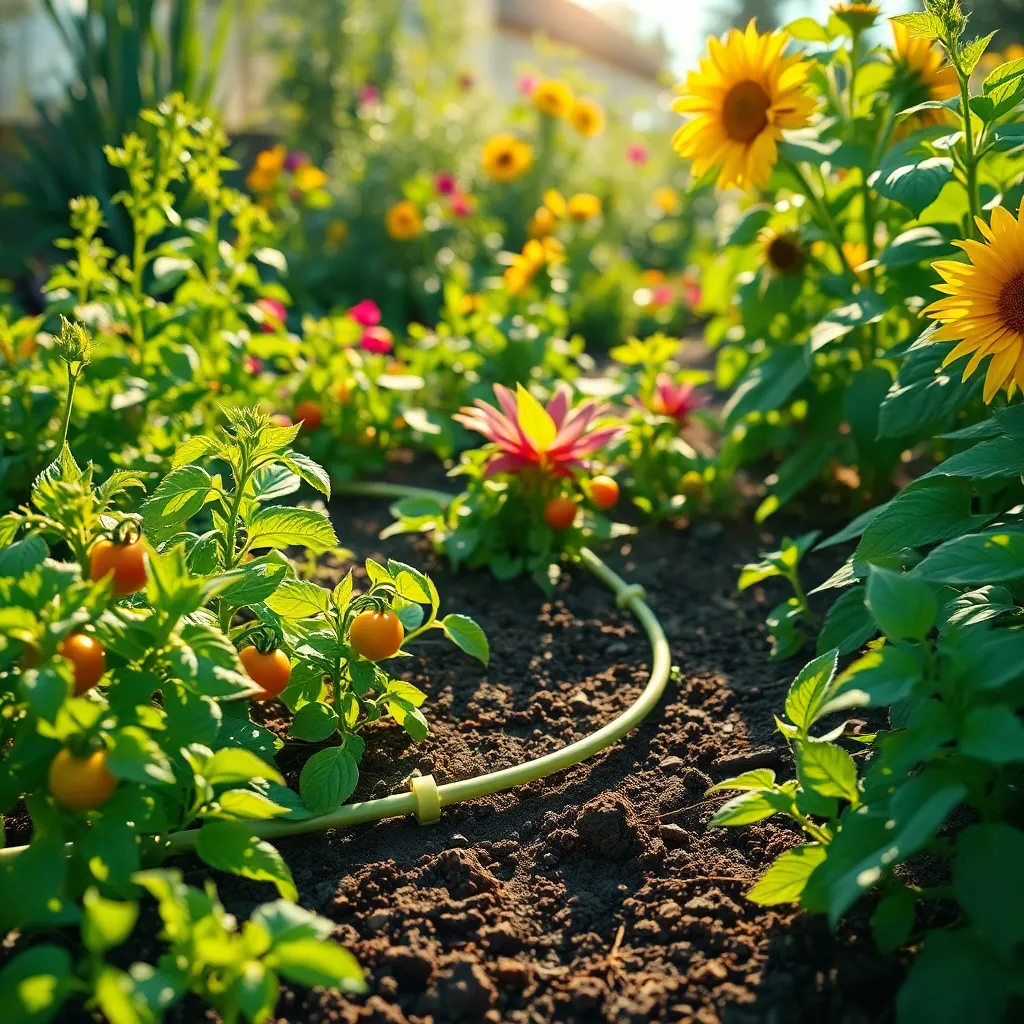
Drip irrigation systems are an excellent way to conserve water while ensuring your plants receive the moisture they need. These systems deliver water directly to the plant roots, which minimizes evaporation and runoff.
To set up a drip irrigation system, start by planning the layout to match your garden’s needs. Consider the size of your garden and the types of plants you have to determine the appropriate emitter spacing and flow rate.
Begin with a starter kit if you’re new to drip irrigation; they typically include everything you need, including tubing, emitters, and connectors. Follow the instructions carefully, ensuring that the tubing is securely connected and laid out to reach all plants.
For advanced gardeners, consider adding a timer to your drip system for automated watering, which can be especially beneficial during vacations or busy periods. Additionally, install a filter to prevent clogs, and periodically check and maintain the system for optimal performance.
Mulch to Retain Soil Moisture
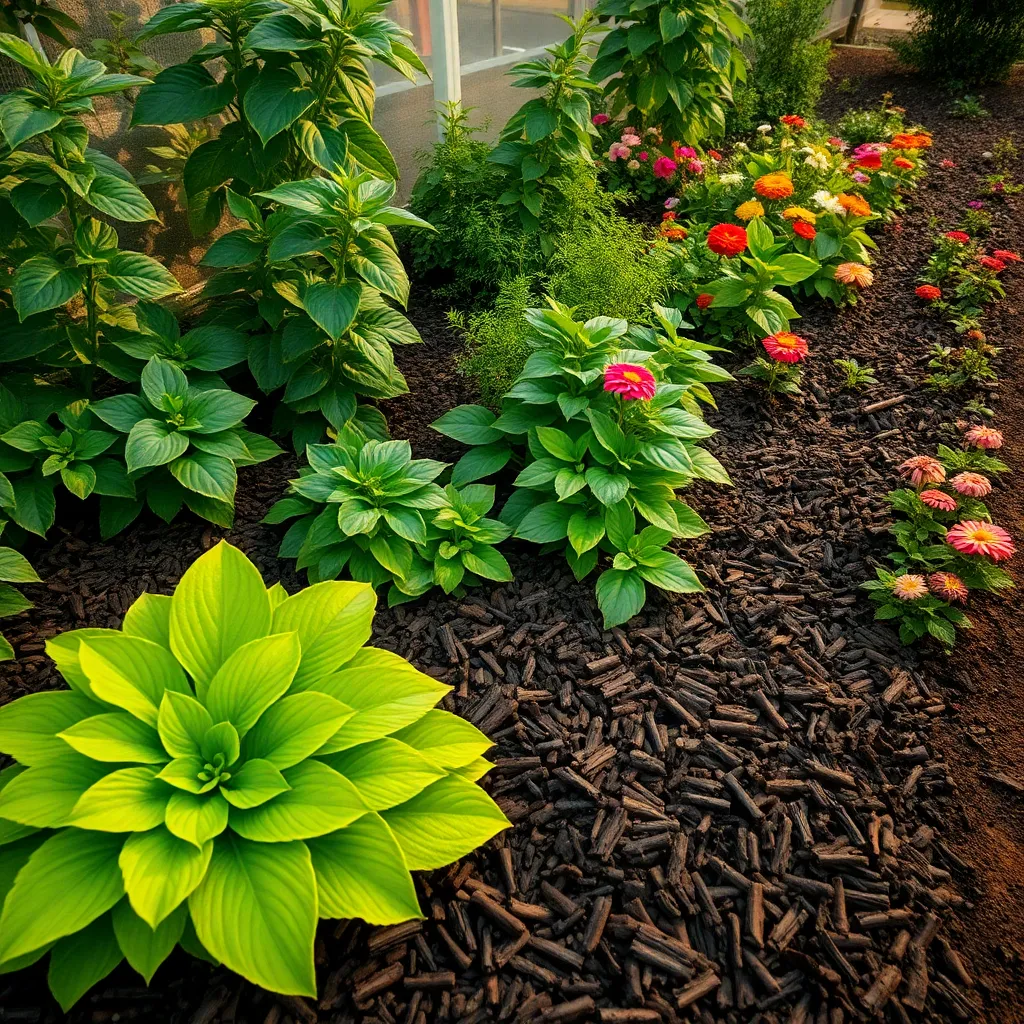
Mulching is a powerful technique for conserving soil moisture, making it an essential practice in water-saving gardening. By applying a layer of mulch, such as shredded bark, straw, or even grass clippings, gardeners can significantly reduce evaporation and keep the soil consistently moist.
This protective layer not only conserves water but also helps regulate soil temperature, which is crucial during hot weather. In addition to retaining moisture, mulch suppresses weed growth, reducing competition for water and nutrients that your plants need to thrive.
For those new to mulching, start by applying a 2-3 inch layer around your plants, ensuring not to pile it directly against stems or trunks to prevent rot. Choose mulch materials that suit your garden style; organic options like wood chips and leaf mold can gradually enrich your soil as they decompose.
Experienced gardeners might consider using inorganic mulches like gravel or stone for areas with perennial plants, as these materials don’t decompose and require less frequent replenishment. However, it’s essential to remember that organic mulches often provide more benefits to soil health over time. By incorporating mulching into your gardening routine, you’ll not only save water but also create a healthier garden environment.
Collect Rainwater in Barrels

Collecting rainwater in barrels is an effective way to conserve water while maintaining a healthy garden. This sustainable practice not only reduces your water bill but also provides plants with naturally soft, chlorine-free water.
To set up a rainwater harvesting system, position barrels under downspouts to capture runoff efficiently. Ensure the barrels are equipped with a secure lid and a spigot for easy access to the harvested water.
For beginners, start with a single barrel to understand the system’s benefits and management. More experienced gardeners might consider connecting multiple barrels to increase storage capacity, especially during rainy seasons.
Regularly check for clogs and clean the barrels to prevent algae and mosquito breeding. Adding a fine mesh screen over the lid can further protect the water from debris and pests.
Use your collected rainwater to water plants early in the morning or late in the afternoon to minimize evaporation. This approach ensures that your garden remains lush and vibrant, even during dry spells.
Choose Drought-Tolerant Plants

Choosing drought-tolerant plants is a savvy way to conserve water while maintaining a vibrant garden. These plants are specially adapted to survive with minimal watering, making them perfect for areas prone to dry spells or for gardeners looking to reduce water usage.
Succulents such as sedum and agave are excellent choices for a water-wise garden. They store water in their leaves, allowing them to thrive in well-drained soil with infrequent watering.
Native plants are another fantastic option, as they have evolved to thrive in the local climate with little intervention. Research local native species to find those that will seamlessly integrate into your garden, offering beauty and resilience.
When planting drought-tolerant species, it’s vital to consider the soil composition. Amend the soil with organic matter like compost to improve drainage and nutrient retention, which helps these plants establish strong root systems.
For those looking to expand their knowledge, consider the technique of hydrozoning, grouping plants with similar water needs. This approach not only saves water but also simplifies irrigation, ensuring each plant gets just the right amount of moisture.
Water Plants in Early Morning

Watering your plants in the early morning is a highly effective way to conserve water and promote healthy growth. During this time, temperatures are cooler, reducing the amount of water lost to evaporation.
Early morning watering also allows plants to absorb moisture more efficiently, which is crucial for their health and vitality. This approach helps in preventing diseases, as foliage dries more quickly during the day, reducing the risk of fungal infections.
For beginners, it’s important to water at the base of the plants to ensure that the roots receive the moisture they need. Using a soaker hose or drip irrigation system can help deliver water directly to the soil, minimizing waste and ensuring even distribution.
Experienced gardeners might consider using mulch to further enhance water retention in the soil. Mulch not only conserves moisture but also keeps the soil temperature stable, which is beneficial for plant roots, especially during hotter days.
Group Plants by Water Needs
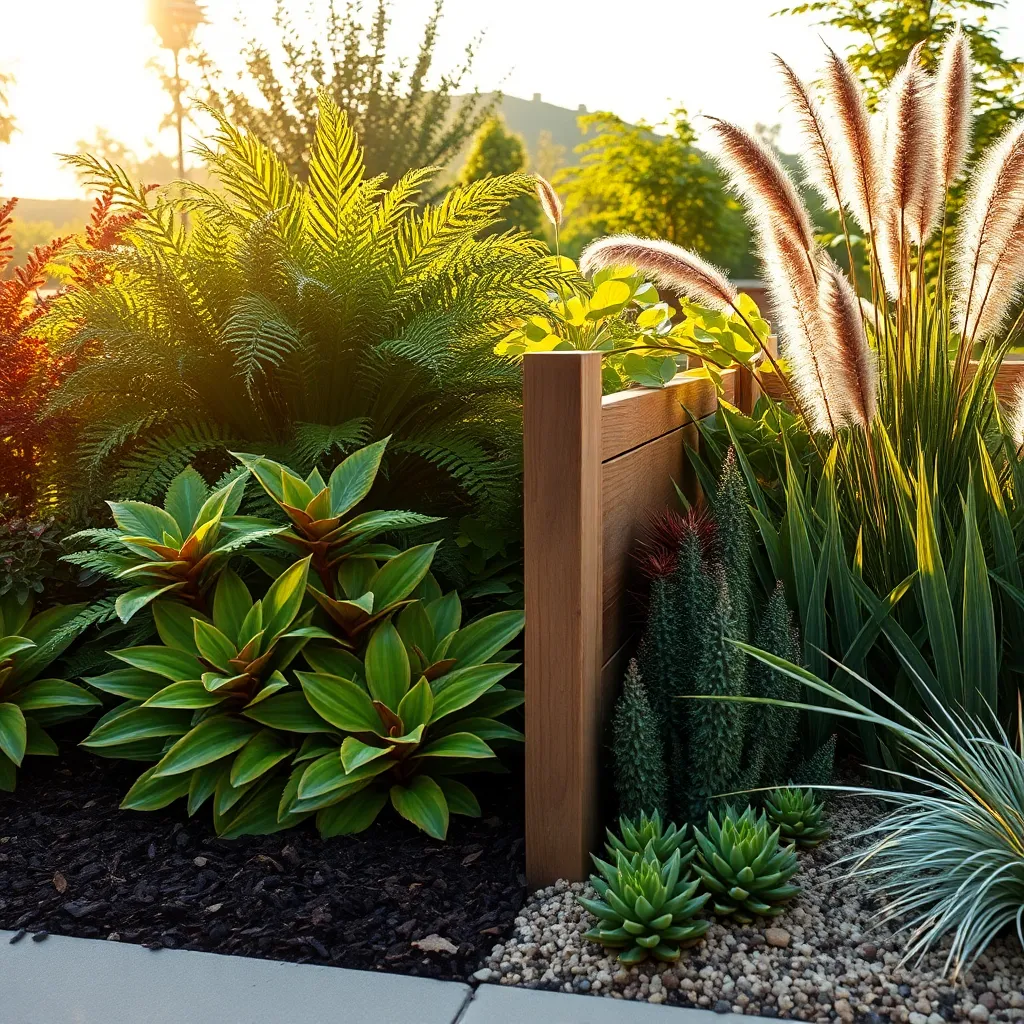
Grouping plants by their water needs is a smart strategy for conserving water in your garden. By doing so, you create zones where plants with similar moisture requirements can thrive, simplifying your watering routine and reducing waste.
Start by identifying the water requirements of each plant in your garden. Cacti and succulents, for instance, have low water needs, while hydrangeas and ferns require more frequent watering.
Once you have an understanding of each plant’s needs, arrange them in clusters or sections based on this information. Use mulch to help retain moisture in the soil and reduce evaporation, especially in areas where plants need more water.
For a low-maintenance approach, consider installing a drip irrigation system tailored to these zones, ensuring each plant group receives the precise amount of water they need. This not only saves water but also promotes healthier growth by preventing overwatering.
Use Greywater for Non-Edibles
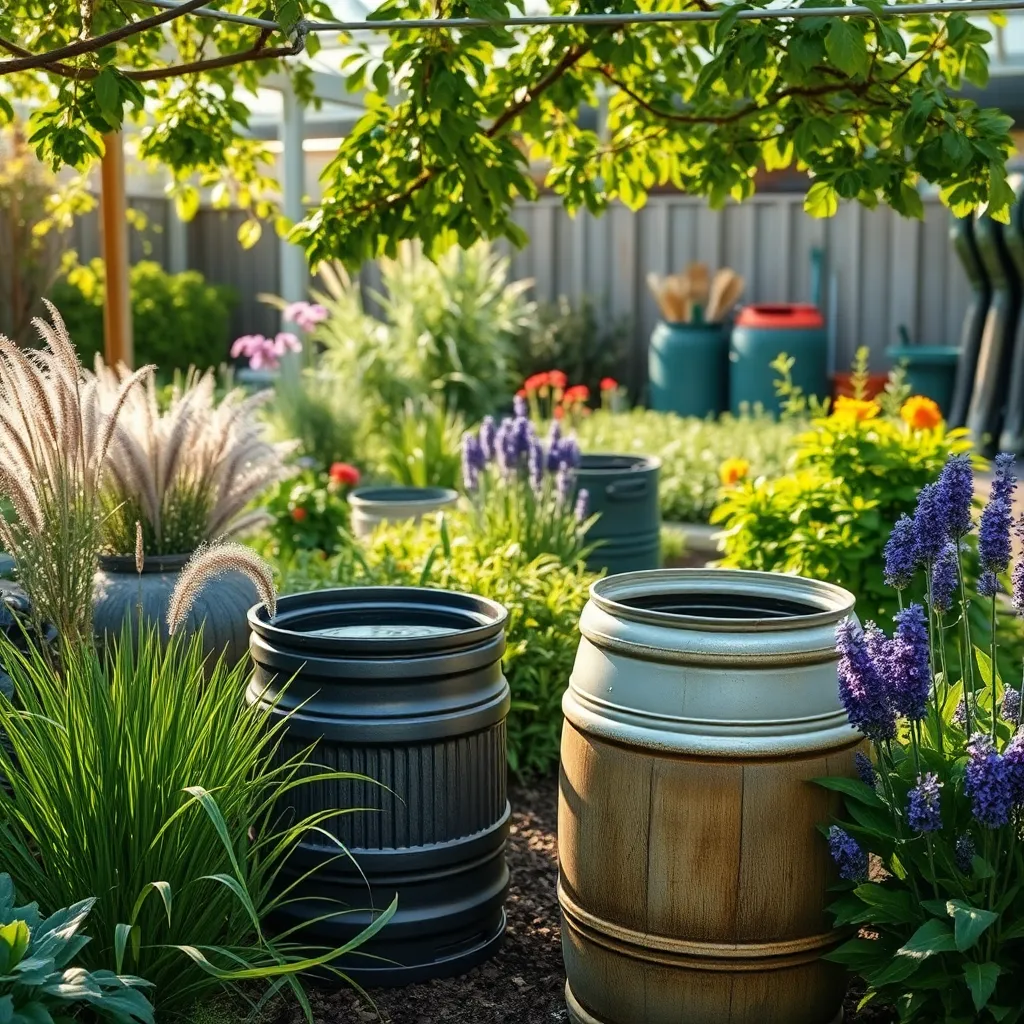
Reusing greywater can significantly reduce water waste in your garden, especially for non-edible plants. This water can come from your shower, bathroom sink, or washing machine, provided you use mild, biodegradable soaps.
To use greywater safely, ensure it is applied directly to the soil and not on the plant leaves. Non-edible plants such as ornamental shrubs, trees, and flowers often thrive with greywater, as long as it is not too salty or greasy.
It’s essential to rotate the use of greywater with fresh water to prevent the build-up of harmful substances in the soil. A simple drip irrigation system can help you distribute greywater efficiently, minimizing the risk of over-saturation.
For those looking to optimize greywater use, consider installing a filtration system that removes impurities before the water reaches your plants. Advanced gardeners might set up a three-tiered garden bed that filters greywater through layers of gravel and sand, further purifying it before it reaches the roots.
Add Organic Matter to Soil
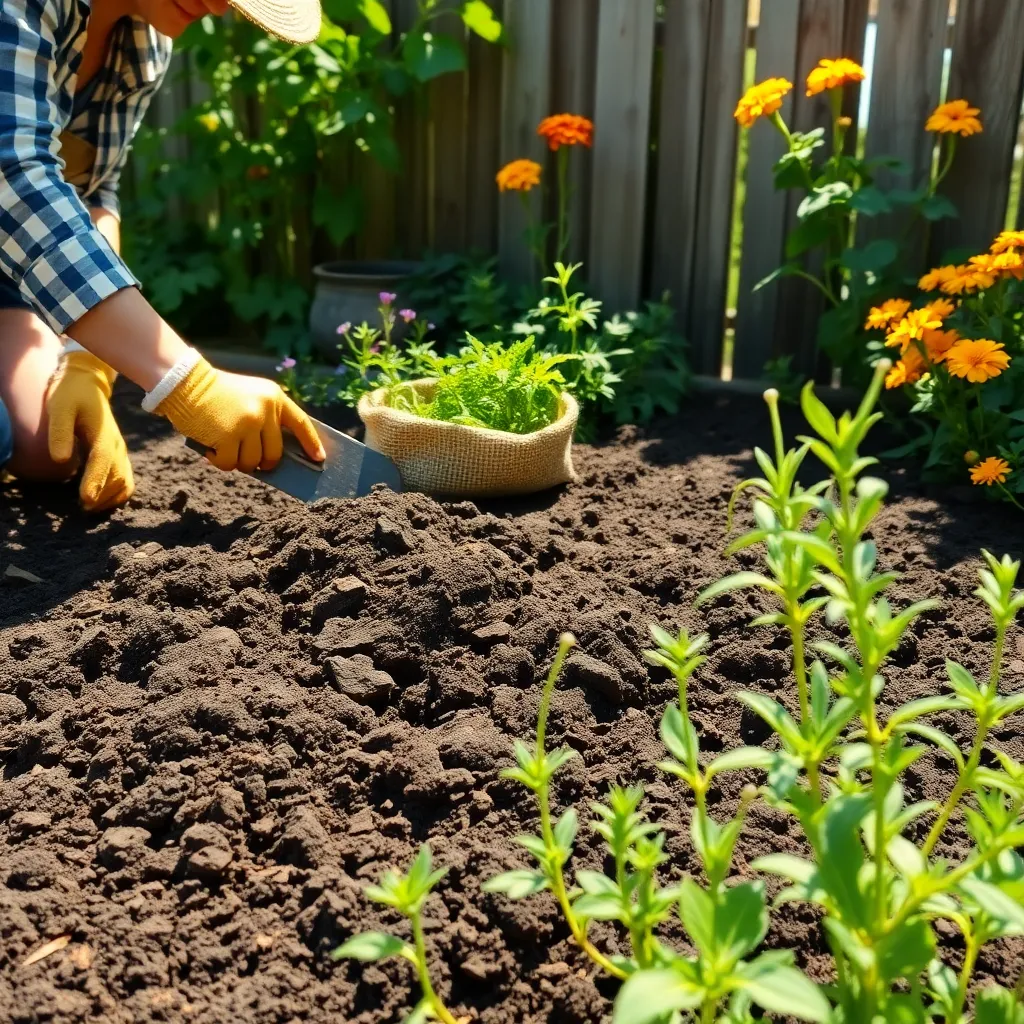
Adding organic matter to your soil is a key strategy for conserving water in your garden. Organic matter improves soil structure, enhancing its ability to retain moisture and nutrients.
For beginners, incorporating compost into your garden is an excellent starting point. Simply spread a 2-3 inch layer of compost over your soil and work it in using a garden fork or tiller, ensuring it’s evenly distributed.
Experienced gardeners might consider using aged manure or leaf mold as alternatives for enriching the soil. These materials not only improve water retention but also encourage beneficial microbial activity, which can enhance plant health.
To maximize water savings, focus on mixing organic matter into the top 6-8 inches of soil, where plant roots are most active. Regularly replenish organic material each growing season to maintain soil health and improve water efficiency.
Create Shaded Garden Areas
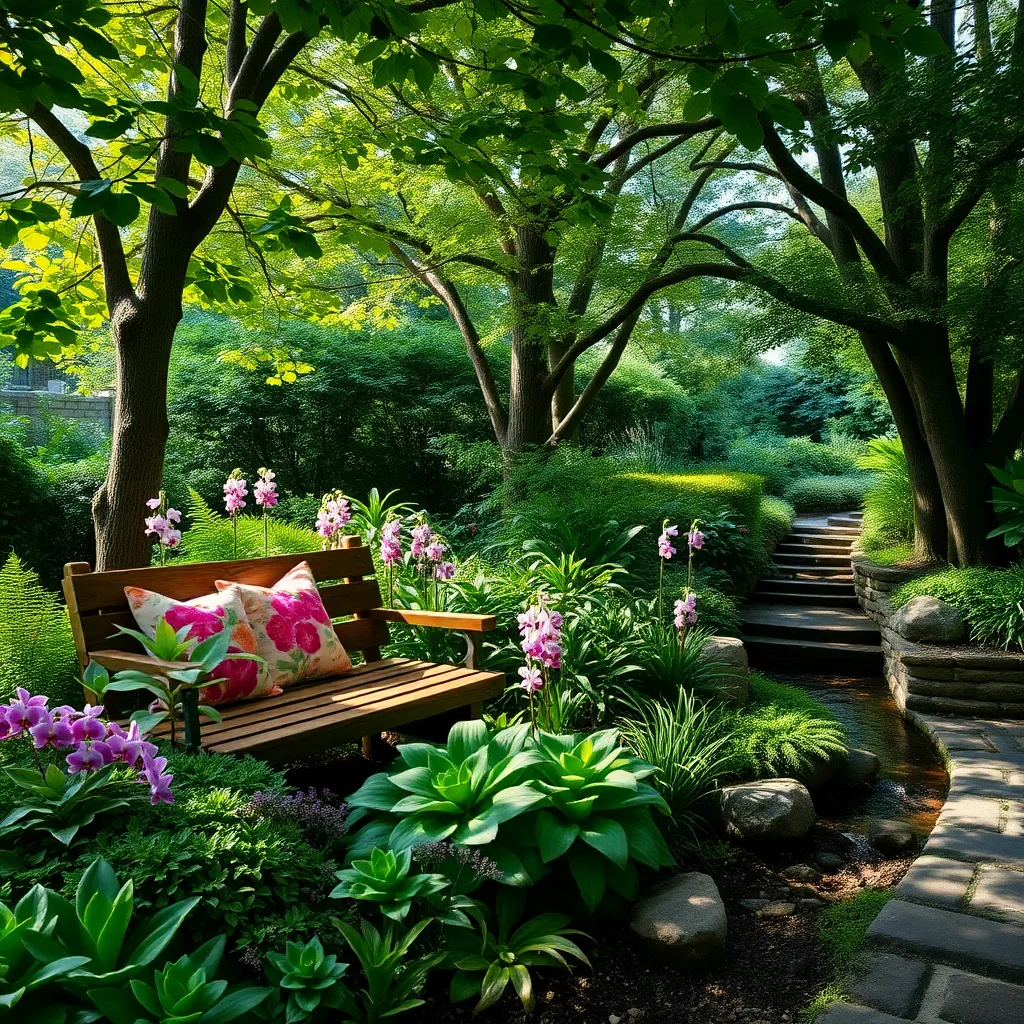
Creating shaded garden areas can significantly reduce water loss by minimizing evaporation from soil and plant surfaces. To achieve this, consider installing structures like pergolas or using shade cloths strategically above plant beds.
Another effective method is to plant trees or tall shrubs that naturally provide shade. Opt for fast-growing species such as Japanese maples or elderberries which can establish a canopy quickly.
For smaller gardens, use trellises or arbors to support climbing plants such as clematis or wisteria that can offer shade as they mature. These plants not only provide cover but also add vertical interest and beauty to your garden.
Advanced gardeners might explore intercropping techniques where taller plants provide shade for shorter, more sun-sensitive species. This approach requires careful planning of plant heights and growth patterns to ensure all species thrive.
Set Up Automatic Timers

Setting up automatic timers for your garden’s irrigation system is a smart way to conserve water while ensuring your plants get the moisture they need. Automatic timers allow you to schedule watering sessions during the cooler parts of the day, reducing evaporation and water waste.
For beginners, start by selecting a basic timer that suits your garden’s size and complexity. These devices can be easily attached to your garden tap or hose, making them highly accessible and user-friendly.
Advanced gardeners might consider timers with more sophisticated features, such as soil moisture sensors and weather-based adjustments. These systems can automatically skip watering sessions on days when rain is expected, further optimizing water use.
To ensure your plants thrive, set your timer to water early in the morning or late in the evening. This timing minimizes evaporation and allows plants to absorb moisture more effectively, promoting healthier growth.
Aerate Soil for Better Absorption

To maximize water absorption in your garden, aerating the soil is crucial. Over time, soil can become compacted, which limits the roots’ access to water and nutrients.
Consider using a garden fork or a mechanical aerator to gently loosen the soil. This process helps to break up compacted areas, allowing water to penetrate more deeply and efficiently.
For gardeners working with clay-heavy soils, aeration is particularly beneficial as it prevents waterlogging and improves drainage. Adding organic matter like compost can further enhance soil structure, making it more porous and supportive of root growth.
Incorporate this practice into your gardening routine by aerating your soil once or twice a year, ideally in spring and fall. This not only improves water retention but also boosts the overall health of your plants, encouraging vigorous growth and resilience.
Check for Leaks Regularly

Regularly checking for leaks in your garden’s irrigation system is crucial for both water conservation and plant health. Leaky hoses or connections not only waste water but can also lead to overwatering, which harms plants and may encourage disease.
Begin by inspecting all visible components of your watering system, such as hoses, taps, and sprinkler heads, for any signs of wear or damage. If you notice any damp spots in the soil or moss growing in unusual places, it could indicate an underground leak that needs attention.
For beginner gardeners, make it a habit to walk through your garden while the irrigation system is running. This allows you to spot any issues early on, preventing water waste and ensuring your plants receive the right amount of moisture.
Advanced gardeners might consider installing a moisture sensor to monitor soil conditions more accurately. This ensures that your irrigation system only operates when necessary, optimizing water usage and supporting sustainable gardening practices.
Conclusion: Growing Success with These Plants
In exploring the ’12 Essential Water-Saving Garden Ideas,’ we’ve unearthed powerful parallels for nurturing relationships. We discussed the importance of intentionality, akin to drought-resistant planting, where choosing the right elements ensures sustainability. We emphasized the value of communication, much like efficient watering techniques ensuring nourishment. Flexibility in relationships mirrors the adaptability of mulching, and the importance of boundaries aligns with the strategic use of garden zones. Attentive listening was linked to mindful observation, while shared goals were likened to the collective benefits of rainwater harvesting. We also touched on the significance of patience, the art of letting go, and the joy found in cultivating shared experiences.
Now, take the next step: identify one relationship area that could benefit from a ‘water-saving’ strategy and commit to nurturing it today. Whether it’s setting aside time for intentional conversation or creating shared goals, your actions will sow seeds of growth.
Remember to save this article as a handy guide for future reference. As you embark on this journey, know that each thoughtful action you take brings you closer to a flourishing, resilient connection. Here’s to a future where your relationships thrive, grounded in understanding and care.

